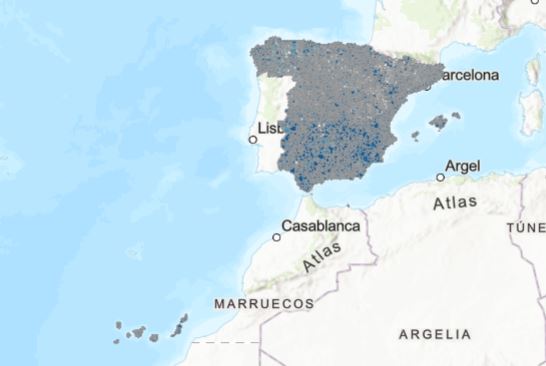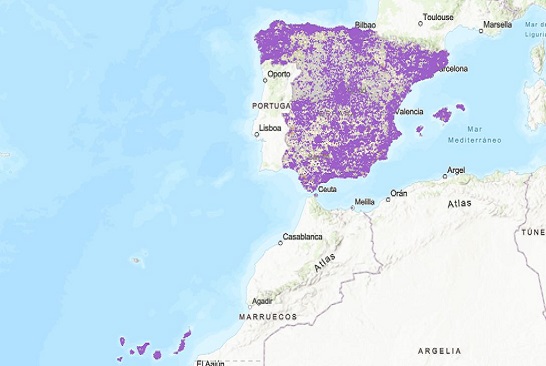Definitions
Broadband coverage
Geospatial broadband coverage in Spain, which allows the user to find out about data connection provision by type of technology (fixed/mobile) and transmission speed, at different territorial levels, descending to municipal scale. For more information, you can consult the reports on broadband coverage in Spain published by the Ministry of Economic Affairs and Digital Transformation.
Broadband technology
The technology that makes it possible to offer broadband services includes networks of digital subscriber lines over copper pairs (ADSL and VDSL); those of cable, with hybrid solutions of fiber and coaxial (HFC); fiber optics to the home (FTTH); the radioelectric ones based on WiMAX; and mobile networks 3.5G (UMTS with HSPA), 4G (LTE) and 5G.
Broadband speed
Broadband speed is presented with information on aggregated coverage in Fast Broadband (≥30 Mbps), Ultrafast Broadband (≥100Mbps) and ≥1 Gbps.









